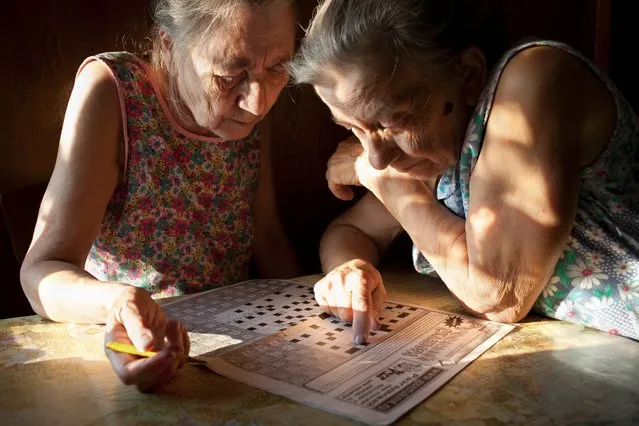
In northwest Russia, in a small village called Alekhovshchina, Nadia Sablin's aunts spend the warmer months together in the family home and live as the family has always lived, chopping wood to heat the house and making their own clothes. Sablin's book of photographs, “Aunties: The Seven Summers of Alevtina and Ludmila”, is published by Duke University Press. Here: “A Six Letter Word For..., 2011”. (Photo by Nadia Sablin)
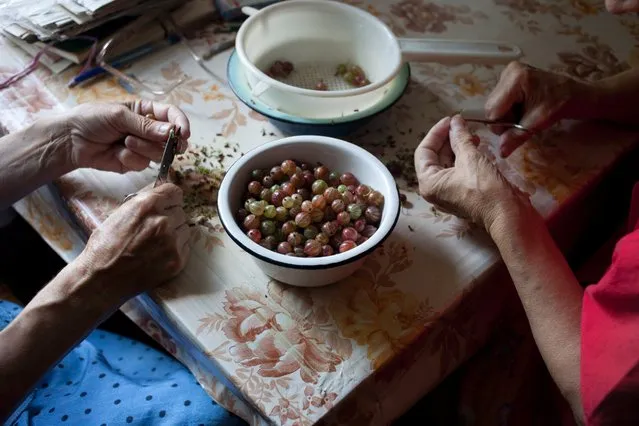
“Northern Grapes, 2011”. Sablin's remarkably lyrical and evocative photographs, taken over seven summers, capture the small details and daily rituals of her aunts' surprisingly colorful and dreamlike days, taking us not only to another country but to another time. (Photo by Nadia Sablin)
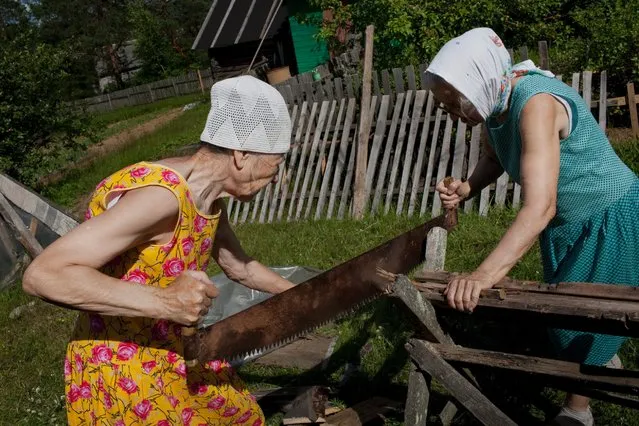
“Two-Handed Saw, 2014”. “Most of the neighbors have switched to power tools to run their households, the buzz of chain saws and weed-whackers overpowering the quieter sounds of country life, but my aunts hold on to the two-handed saw that's decades old, the sickle and scythe that need to be sharpened and polished after each use, the old axe that's becoming heavier each year. Each of these objects is familiar, holding memories of their brother, who succumbed to cancer a few years ago, of days before my grandfather lost his vision in the 50's, of busier days and longer futures”, Sablin told. (Photo by Nadia Sablin)
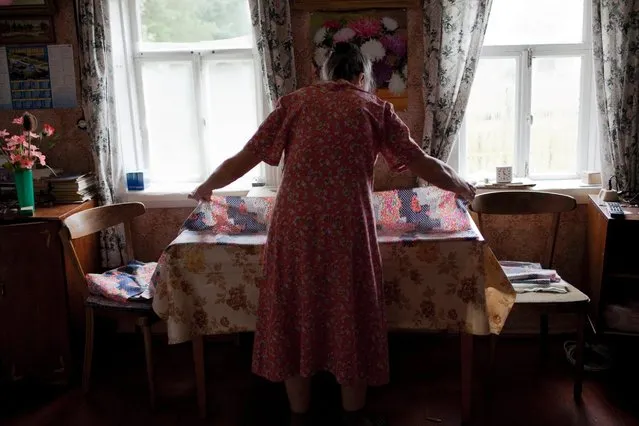
“New House Dress, 2013”. Alevtina and Ludmila, now in their seventies, seem both old and young, as if time itself was as seamless and cyclical as their routines – working on puzzles, sewing curtains, tatting lace, picking berries, repairing fences – and as full of the same subtle mysteries. Sablin, a fine arts photographer, collaborated with her aunts to recreate scenes she remembered from her childhood and to make new images of the patterns of their days. (Photo by Nadia Sablin)
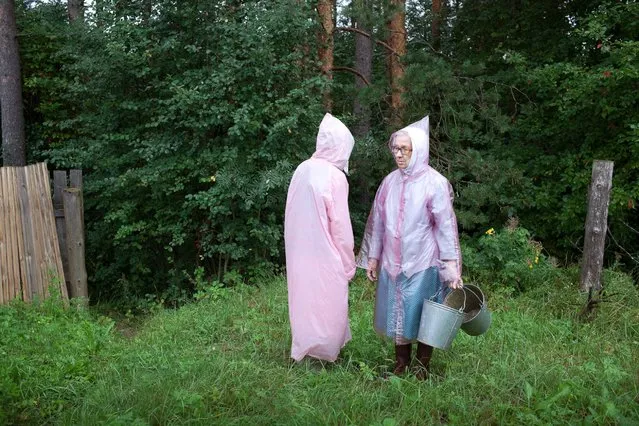
“Raincoats, 2013”. “Up until the age of twelve, I visited the village house every summer and stayed a month or longer. Back then, when my grandfather was still alive, his five children and their spouses would alternately use their vacation time to take care of him and the house. For me, coming from Saint Petersburg, it was a culture shock to find myself in the quiet of the small village, to follow a rigid schedule of meals and chores, and in the remainder of time to be left to run around freely through overgrown fields and forests”. (Photo by Nadia Sablin)
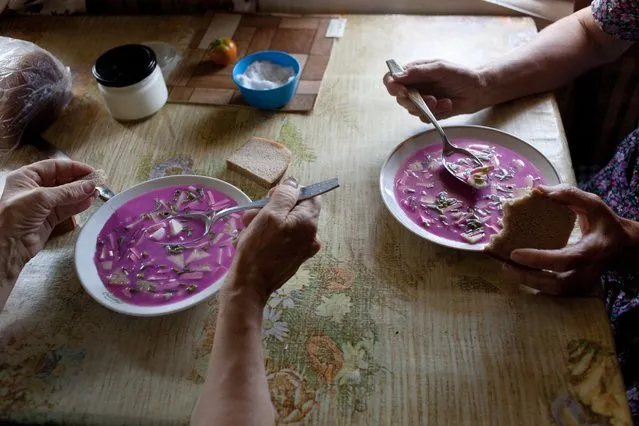
“Lunch for Two, 2009”. “So little had changed from my memories of my aunts and their environment, that I felt like I was transported to the past. My aunts still saw me as a child, the schedule of chores still ruled their lives and the only noticeable changes were the absence of my grandfather and the small garden's transformation into a full-fledged farm. The flood of memories affects how I see the village now and how I experience being with my aunts. I look for gestures that feel familiar, and situations that reflect what I saw and imagined in my childhood”. (Photo by Nadia Sablin)
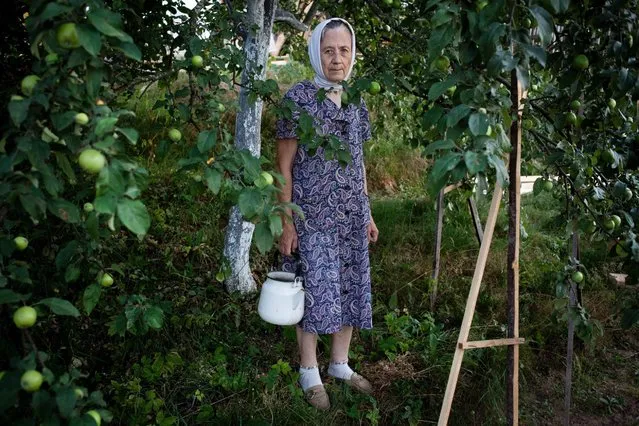
“Under the Apple Tree, 2010”. Sablin's inspiration for the project was her aunts' resilience and dedication to each other and their home, “but also all the wonderful books I read in the attic of their house as a child – fairy tales early on, and later magical realism by Murakami, Marquez and Bulgakov”. (Photo by Nadia Sablin)
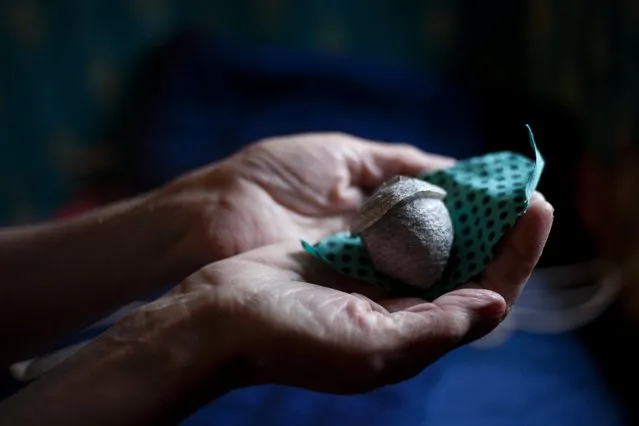
“Wasp Nest, 2012”. “The way the house is constructed allows for the best light to be present at the time when you need it--in the kitchen at dawn, when you need to heat the stove and cook the day's meals, in the large work room in the afternoon for sewing and embroidery on rainy days and in the dining room at sunset, so you can see each other during evening tea without turning on the lamps. It's the same kind of light you see in the portraits of Dutch painters”, Sablin told. (Photo by Nadia Sablin)
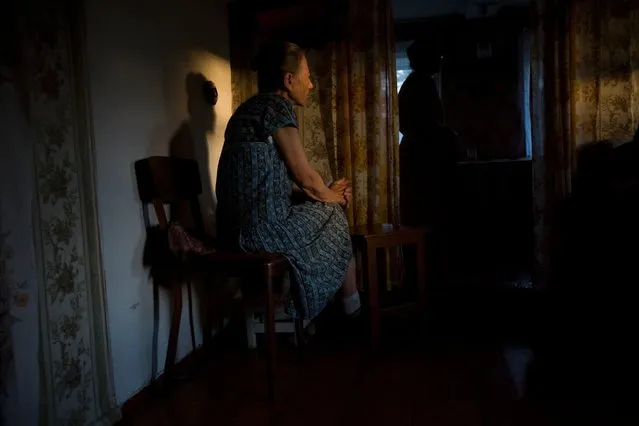
“Favorite Soap Opera, 2008”. “The love my aunts have for each other is non-verbal. They exchange a few facts throughout the day, but they never share feelings or opinions, never get visibly frustrated with each other or show physical affection”. (Photo by Nadia Sablin)
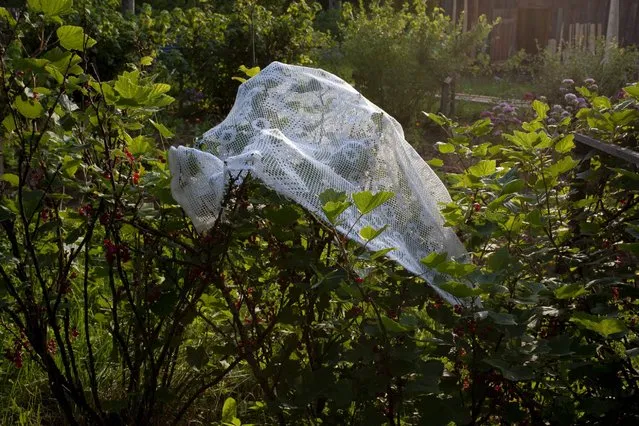
“Berries Saved for Seeds, 2009”. “Their love can be observed through the care with which Ludmila sews Alevtina's clothes and Alevtina cooks their daily meals, in the dutiful completion of their tasks despite heat or fatigue, in their daily coexistence, choreographed over the years into a rhythmic dance, each completing her part of the world they are creating together”, said Sablin. (Photo by Nadia Sablin)
25 Feb 2016 12:12:00,
post received
0 comments
